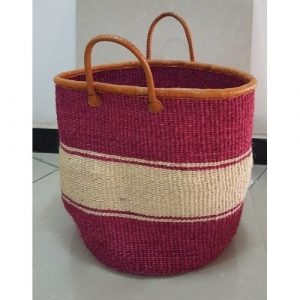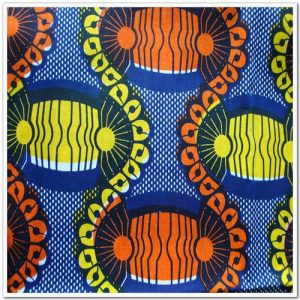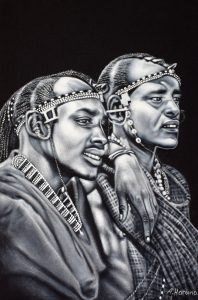1. Kiondo

Kiondo is a beautiful handbag hand-woven by the local artisans from the Kamba and Kikuyu tribes of Kenya. You can choose from a variety of colors and sizes. The bags are made from fibers; they are long-lasting and light-weighted, which makes it easy to carry around. You can get a Kiondo for your friends and loved ones from any curio shop across the country.
2. Uganda Waragi

Uganda Waragi is the drink of choice of many Ugandans who are known to celebrate the slightest occasion in life. Uganda Waragi is a part of Ugandan identity and is tied to its history. Waragi comes from the words War Gin. It was given to Ugandan Soldiers before going into battle to provide the soldiers with what is sometimes called Dutch Courage.
Locally made Waragi, that is not recommended since often methanol impurities are contained in the Ugandan Moonshine that goes by names such Enguli, Lira Lira and Kasese.
3. Kitenge

The Kitenge Fabric has been called ‘the communicating textile’ because of the various colors, patterns, writings, and symbols which represent moods, feelings, cultures, and traditions of African people including Uganda
The beauty that is kitenge is that it comes in a host of colors and patterns with each telling its own story. A traditional batik technique is used to print these patterns with each holding its uniqueness and story.
It brings me great pleasure to see the streets of Kampala brightly colored with all these fabrics in different styles and prints. With people of all ages beautifully clad in these clothes.
Kitenge is worn by most women in Rwanda and can be found in markets across the country. Contemporary artisans in Rwanda have recently begun to use kitenge in creative ways, making their mark on a once-traditional material. Check out the kitenge bow ties at the House of Tayo, one of Rwanda’s most celebrated designers.
4. Tribal Jewelry
You will come across all kinds of jewelry made in Uganda during your safari in the Pearl of Africa. It ranges from the inexpensive to jewelry made of precious metals.
Most purchased the inexpensive jewelry made by mostly women for sale to tourists and sold abroad, providing a decent income for a Ugandan family.
5. Tingatinga African Paintings

Today, authentic Tinga Tinga African paintings can be bought from the Tingatinga Arts Cooperative Society which is located along Hailee Salasie Road in Oysterbay or their official website.
The style originated with Edward Tingatinga, who started painting his highly-stylized animals and scenery in Dar es Salaam in the late-1960s. Using inexpensive materials, such as Masonite (a hard-board formed from wood scraps) and bicycle paints Tingatinga quickly drew attention from tourists, who loved his use of extremely bright colors and his naïve style.
Tingatinga died just a few years later, in 1972, but by then his style had caught on. Followers of his school recreated nearly all of his works (meaning it’s not only rare to find an original Tingatinga these days, but it’s often hard to authenticate one), and over the years, expanded and evolved the form.
Today, Tingatinga artwork may hew closely to Edward Tingatinga’s early style and choices of subject matter (he often painted animals), or it may simply use the fundamental elements Tingatinga employed—abstraction, bright colors, and simple, graphic shapes—as a springboard for highly individual works of art.
The Tingatinga Arts Cooperative Society (TACS) was registered on 28th July 1990 in Dar es Salaam, Tanzania.
The Tinga Tinga community in Tanzania consists of around 700 painters who paint every day on the streets of Dar es Salam, near the beaches of Zanzibar or under the highest African mountain Kilimanjaro.
There are few Tinga Tinga painters in Kenya, South Africa and as far as Europe, Japan, and America. They are all linked together by either by family or friendship.
Tingatinga Arts Co-operative Society with almost 100 artists is in the center of the Tinga Tinga movement. It is the best organized Tinga Tinga group, the core Tinga Tinga family from South Tanzania.
6. Ethiopian jewelry
Copal-beaded necklaces, silver earrings, bronze collars, anklets, and filigree-decorated bracelets, to name a few – Ethiopian jewelry is indeed a big thing throughout Africa when we talk about religion, culture, and traditions. Ethiopians are known as skilled metalsmiths, so expect to see true works of art in jewelry. They use fishbone, wood, silver, and even feathers to make jewelry, which makes Ethiopian jewelry shine amongst the rest. If you want to be fabulous, you know now what to look for in Ethiopia.
7. Baskets
Baskets are part of Ethiopian society and culture. They are colorful, functional, and sacred items throughout Africa. As we know, Africans are skilled artisans, so expect high-quality handicrafts. Traditional handmade straw baskets are stunning and have spectacular geometric patterns with different colors made of natural straw. If you want something that will remind you of Africa, buying this item is a good choice.
8. Tanzanite
Mined exclusively in Tanzania, this jewel is a special gift to possess and is available in Arusha, Dar es Salaam and on the island of Zanzibar. Just ask your safari guide for some time off and help you locate favorable souvenir stores.
Make sure you have done good research on the stone quality or locate a store with a trustworthy and tanzanite retailer.
Tanzanite is a thousand times scarcer than diamonds and can only be found in Tanzania. Named by Tiffany’s in 1967 this unique gemstone is world-famous for its vivid blue/violet color.










